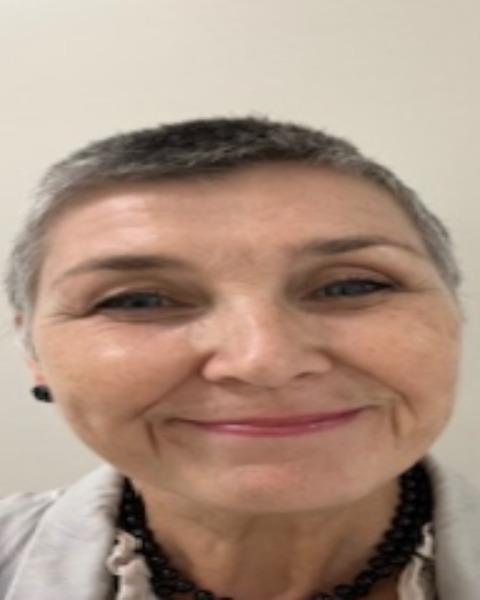Nursing Symposium
Poster Session 2
NSP-06: Self-administration of subcutaneous Bortezomib in the home setting: A feasibility study
Thursday, September 26, 2024
Location: Exhibit Hall, Pavilion 3


Jacqui Jagger, RN, BA(Hons), MN(NP)
Haematology Nurse Practitioner
CCLHD
Gosford, New South Wales, Australia
Introduction: Bortezomib-based regimens for patients with multiple myeloma (MM) are administered in cancer day units (CDU), requiring repeated travel to the hospital once or twice weekly. In addition to high health care costs associated with therapy, travel adds to the financial and treatment burden experienced by the individual and family. Patients and carers in regional New South Wales Australia, reported anxiety provoked by frequency of hospital visits, waiting times, travel and parking. This study examined the feasibility, safety and acceptability of a new model of care (MOC) enabling patients to self-administer subcutaneous (SC) bortezomib at home, supported by guidelines, educational resources, competency tools, telehealth tools, and safety protocols.
Methods: Twenty-three MM patients participated in a prospective mixed-methods study. Patients or caregivers underwent an education period and competency assessments before home administration. Patients were observed self-injecting on day 1 of each subsequent cycle to monitor technique, receive any intravenous therapy, and dispense medications including remaining bortezomib for the cycle. Subsequent injections were monitored via telehealth. Patient experiences were explored through patient reported experience measures, CDU appointment survey and a MOC survey. Semi-structured interviews were conducted with 8 patients. Costs were analysed for bortezomib manufacture, time burden data, chair time and staffing. Pre- and post- Self-Injection Assessment Questionnaires (SIAQ) were completed at baseline, week 1 and week 4. Safety and efficacy were evaluated using pathology results and self-injection adverse event (AE) reports. Neuropathy assessment was completed using PRO-CTCAE items and FACT- NTX13. Staff acceptability was explored using a survey.
Results: Patients ranged from 50 – 87 years, with 81% male and 57% on their first line of therapy. Twenty-one patients completed the study. SIAQ satisfaction scores showed significant improvement over time (baseline vs T1, p = 0.0046; vs T4, p = 0.0139). The only AE reported was a needle-stick injury during self-injection. The self-administration model required 30 minutes of the patient’s time per week compared to 1-3 hours in the CDU. Interviews revealed that the self-administration program significantly improved patients’ daily lives, with time savings the most frequently reported benefit. Cost analysis indicated higher expenses for CDU-administered bortezomib ($308 per cycle) compared to self-administration ($216 per cycle).
Conclusions: Self-administration of SC bortezomib is a safe and feasible option for patients with MM in a regional setting. There is a high level of satisfaction from patients and carers. This model reduced the treatment burden, allowing patients and families to dedicate more time to meaningful activities and rest. The comprehensive design of the MOC is potentially transferable and adaptable to other drugs and tumour streams.
Methods: Twenty-three MM patients participated in a prospective mixed-methods study. Patients or caregivers underwent an education period and competency assessments before home administration. Patients were observed self-injecting on day 1 of each subsequent cycle to monitor technique, receive any intravenous therapy, and dispense medications including remaining bortezomib for the cycle. Subsequent injections were monitored via telehealth. Patient experiences were explored through patient reported experience measures, CDU appointment survey and a MOC survey. Semi-structured interviews were conducted with 8 patients. Costs were analysed for bortezomib manufacture, time burden data, chair time and staffing. Pre- and post- Self-Injection Assessment Questionnaires (SIAQ) were completed at baseline, week 1 and week 4. Safety and efficacy were evaluated using pathology results and self-injection adverse event (AE) reports. Neuropathy assessment was completed using PRO-CTCAE items and FACT- NTX13. Staff acceptability was explored using a survey.
Results: Patients ranged from 50 – 87 years, with 81% male and 57% on their first line of therapy. Twenty-one patients completed the study. SIAQ satisfaction scores showed significant improvement over time (baseline vs T1, p = 0.0046; vs T4, p = 0.0139). The only AE reported was a needle-stick injury during self-injection. The self-administration model required 30 minutes of the patient’s time per week compared to 1-3 hours in the CDU. Interviews revealed that the self-administration program significantly improved patients’ daily lives, with time savings the most frequently reported benefit. Cost analysis indicated higher expenses for CDU-administered bortezomib ($308 per cycle) compared to self-administration ($216 per cycle).
Conclusions: Self-administration of SC bortezomib is a safe and feasible option for patients with MM in a regional setting. There is a high level of satisfaction from patients and carers. This model reduced the treatment burden, allowing patients and families to dedicate more time to meaningful activities and rest. The comprehensive design of the MOC is potentially transferable and adaptable to other drugs and tumour streams.